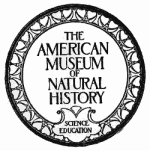ANTHROPOLOGICAL PAPERS
OF
THE AMERICAN MUSEUM
OF NATURAL HISTORY
Vol. XVI, Part III
THE SUN DANCE OF THE BLACKFOOT INDIANS
BY
CLARK WISSLER

NEW YORK
PUBLISHED BY ORDER OF THE TRUSTEES
1918
[223]THE SUN DANCE OF THE BLACKFOOT INDIANS.
By Clark Wissler.
[225]Preface.
The Blackfoot tribes, particularly the Piegan, have been moreextensively studied than most other Plains Indians. The writer began asystematic investigation of their culture in 1903. At that time, theonly works treating them seriously were those of the younger Henry,Maximilian, and Grinnell. There were some good fragmentary articles byMcLean and Hale. Yet, since we began work on this problem, a number ofexcellent books have appeared. First, the long-forgotten journals ofMathew Cocking and Anthony Hendry who went to the Blackfoot country in1754 were printed. Then followed McClintock's delightful book, "The OldNorth Trail" and later, Curtis's highly illustrated account of thePiegan. Linguistic studies had been undertaken by Tims, but later,Michelson, Uhlenbeck, and Josselin de Jong brought out studies of thelanguage and some aspects of social organization. Of more popular books,the only one to be considered here is Schultz's, "My Life as an Indian,"which, though in the form of fiction, is full of true pictures ofBlackfoot life and thought. One unfortunate thing about all thissubsequent activity is that it centered on the Piegan and as thewriter's work was largely with that division before these publicationsappeared, there was no chance to rectify this asymmetry.
The publication of this study of the sun dance has been long delayed inthe hope that circumstances would permit a more intensive study of theceremony among the Canadian divisions. But the time for making such astudy has really passed, since those natives who had the knowledgeessential to an accurate exposition of the sun dance are now dead. Itseems advisable, therefore, to publish the data as they stand.
The writer saw the Piegan ceremony twice, so that this study is basedboth upon objective observation and discussion with the nativeauthorities on the subject. Later, Mr. Duvall checked over the data andconclusions with these and other informants. A large series ofphotographs was taken, but the important phases of the ceremony are sowell shown in the published works of McClintock and Curtis that arepetition here is unnecessary.
Clark Wissler.
May, 1918.
[227]CONTENTS.
- Page.
- Preface 225
- The Sun Dance 229
- Preparation Period 229
- Program by Days 230
- First Day 230
- Second Day 230
- Third Day 230...